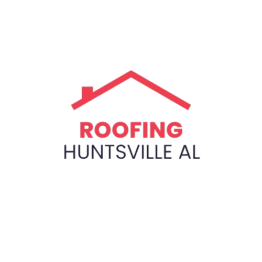Green roof have become an increasingly popular feature in urban architecture, offering both aesthetic appeal and environmental benefits. They provide a way to combat urban heat islands, manage stormwater, and create green spaces in densely populated areas. But what exactly are green roof, and what are the two types of green roofs that you can install on your building? In this blog, we’ll delve into the specifics of extensive and intensive green roof, explaining their characteristics, benefits, and suitable applications.
Understanding Green Roofs
A green roof is a layer of vegetation planted over a waterproofing system installed on top of a flat or slightly sloped roof. Green roofs offer a range of benefits, including improved air quality, enhanced energy efficiency, and increased biodiversity in urban environments. They are typically divided into two main categories: extensive and intensive green roof.
Extensive Green Roofs
Extensive green roofs are designed to be lightweight and low-maintenance, making them suitable for a variety of buildings, including residential homes and commercial properties. Here’s a closer look at the characteristics and benefits of extensive green roof:
Characteristics of Extensive Green Roofs
- Shallow Substrate Depth: The growing medium for extensive green roof is relatively shallow, typically ranging from 2 to 6 inches. This makes them lighter and easier to install on existing structures without significant structural modifications.
- Low Plant Diversity: Extensive green roof usually feature hardy, drought-resistant plants such as sedums, grasses, and mosses. These plants require minimal maintenance and can thrive in shallow soil.
- Minimal Maintenance: Due to their self-sustaining nature, extensive green roof require little to no irrigation, fertilization, or regular upkeep. This makes them an attractive option for building owners seeking an eco-friendly solution without the need for intensive care.
- Lightweight: With a total weight ranging from 10 to 50 pounds per square foot, extensive green roofs are suitable for buildings that may not support the weight of an intensive green roof.
Benefits of Extensive Green Roofs
- Cost-Effective: Extensive green roof are generally less expensive to install and maintain compared to intensive green roofs. Their lightweight design reduces the need for additional structural support.
- Environmental Impact: These roofs contribute to urban biodiversity by providing habitats for insects and birds. They also improve air quality by absorbing pollutants and carbon dioxide.
- Stormwater Management: Extensive green roof can retain 50-80% of annual rainfall, reducing the burden on urban drainage systems and lowering the risk of flooding.
- Thermal Regulation: By providing insulation, extensive green roofs help reduce the urban heat island effect and improve the energy efficiency of buildings, leading to lower heating and cooling costs.
Intensive Green Roofs
Intensive green roofs, often referred to as rooftop gardens, are more complex and versatile than their extensive counterparts. They offer a wider range of plant options and can support a variety of landscape features. Here’s what you need to know about intensive green roofs:
Characteristics of Intensive Green Roofs
- Deep Substrate Depth: The soil depth for intensive green roofs ranges from 6 inches to several feet, allowing for the growth of a diverse array of plants, including trees, shrubs, and even small vegetable gardens.
- High Plant Diversity: Intensive green roofs can accommodate a wide range of plants, from grasses and flowers to bushes and trees. This diversity makes them ideal for creating lush, garden-like spaces.
- Regular Maintenance: Unlike extensive green roofs, intensive green roofs require regular maintenance, including watering, fertilizing, and pruning. They may also need irrigation systems to support the health of the plants.
- Heavier Weight: Due to the deeper soil and larger plants, intensive green roofs are heavier, typically weighing between 80 to 150 pounds per square foot. This requires additional structural support and consideration during the planning phase.
Benefits of Intensive Green Roofs
- Aesthetic Appeal: Intensive green roofs can transform an urban rooftop into a beautiful, functional space. They offer the potential for recreational areas, community gardens, and even rooftop parks.
- Increased Biodiversity: These roofs provide habitats for a wide range of flora and fauna, contributing to urban biodiversity and ecological balance.
- Enhanced Property Value: The presence of an intensive green roofs can significantly increase the value of a property, making it more attractive to potential buyers or tenants.
- Improved Quality of Life: By creating green spaces in urban areas, intensive green roof contribute to the well-being of residents, offering a place to relax and connect with nature.
Choosing the Right Green Roof
Deciding between an extensive and intensive green roof depends on several factors, including the building’s structural capacity, budget, and intended use of the rooftop space. Here are some considerations to help you make the right choice:
Structural Capacity
Before installing a green roof, it’s crucial to assess the building’s structural capacity. Extensive green roofs are suitable for buildings with limited load-bearing capacity, while intensive green roofs require robust structural support.
Budget
Extensive green roofs are generally more cost-effective in terms of installation and maintenance. If budget constraints are a concern, an extensive green roof might be the better option.
Purpose and Use
Consider how you plan to use the rooftop space. If you’re looking to create a recreational area or garden, an intensive green roof is the way to go. For those prioritizing environmental benefits with minimal maintenance, an extensive green roof is ideal.
Conclusion
Green roofs are an innovative solution to many urban environmental challenges, offering both ecological and economic benefits. By understanding the differences between extensive and intensive green roofs, you can make an informed decision that meets your building’s needs and enhances your urban environment. Whether you opt for the low-maintenance approach of an extensive green roof or the lush, garden-like appeal of an intensive green roof, you’re contributing to a greener, more sustainable future.
